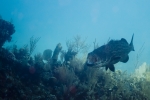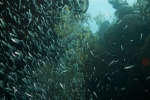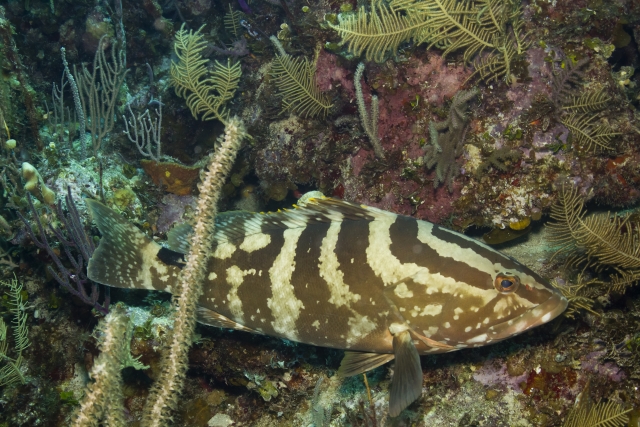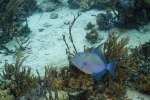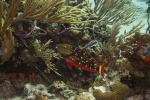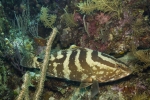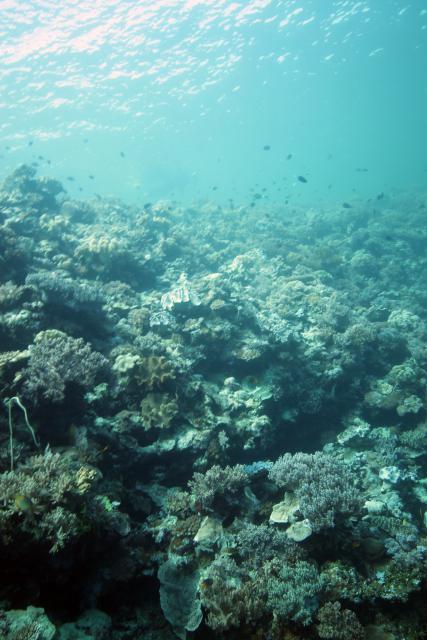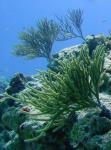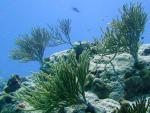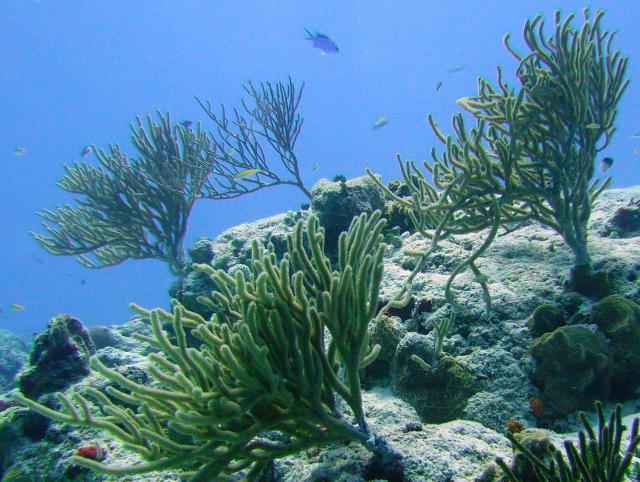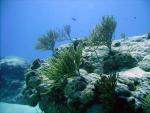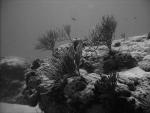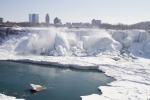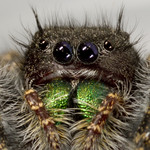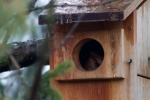reef
Aqua Cat: Fish Assortment
ktuli — Thu, 11/06/2014 - 19:59
Ok - time for just an assortment of photos, this batch is of some of the fish we saw on the reef...
Thanks for stopping by!
- Bill
Aqua Cat: Patterns of the Reef (part 6)
ktuli — Wed, 11/05/2014 - 18:45
If you've been following along at home, you'll remember several other entries in this series. I don't know if it a combination of having the macro lens on and really looking at things in more detail, or the slightly reduced peripheral vision I get from wearing my scuba mask (I have a prescription mask, so my peripherals aren't as good), but I just seem to end up being fascinated with the patterns and the beauty in the abstract that I find on the reef...
Technical Data: Canon EOS 7D, Canon EF 100mm f/2.8L Macro IS USM, 1/100th sec at f/4. ISO 400. Ikelite Housing and Port with dual Ikelite 161 Strobes. Raw conversion in Adobe Camera Raw.
- Bill
Wakatobi: Wide Angle
ktuli — Fri, 02/11/2011 - 17:06
These will be the only wide angle underwater shots I'll be sharing from our Wakatobi trip. With all the macro-life on the reefs there, I simply couldn't bring myself to take the 100mm macro lens off my camera. I didn't feel I was getting great wide angle shots, and I was having too much fun with the macro stuff to try more.
Technical Data: Canon EOS 7D, Sigma 10-20mm f/4-5.6 EX DC HSM at 10mm, 1/100th sec at f/5. ISO 100 (Auto). Ikelite Housing and Port with Ikelite 161 Strobe at full power. Modified version auto-color-correction in Photoshop Elements 8.0.
Technical Data: Canon EOS 7D, Sigma 10-20mm f/4-5.6 EX DC HSM at 20mm, 1/32nd sec at f/5.7. ISO 100 (Auto). Ikelite Housing and Port with Ikelite 161 Strobe at full power. Modified version auto-color-correction in Photoshop Elements 8.0.
Mouseover the images for the originals. All in all, there isn't much to talk about with these shots - they're far from special - something I will have to try working on next time we go diving (unless there's enough macro life to work with again!).
One thing I will say about Wakatobi's reefs at this point is that before this trip I really didn't have an appreciation for the term coral garden. Almost every dive was what is called a wall dive, which is (as the name implies) a vertical wall where all the corals and life grow. At the end of most of those dives, we would surface up onto the level area above the wall (usually in about 10-15 feet of water), and there you would just see corals of every variety spreading out as far as you could see. It truly was beautiful, and I am a bit disappointed that I didn't do a better job of capturing a photo to show that to others.
I guess I just have to go back and try again....
- Bill
Poll: Black Sea Rod Cropping
ktuli — Thu, 01/13/2011 - 17:50
Ok - that last post reminded me that I promised to share different cropping options for the 'winner' of that poll. So here we go... Three fairly different crop options with the color corrected version of the photo. As usual, mouseover the thumbnails for the larger image to display.
|
|
|
|
|
|
||
Hopefully by now, you know how this works... choose your preferred version below, then leave a comment with why you chose what you chose.
Thanks for stopping by!
- Bill
PS: I do have to admit that I removed the small Blue Chromis from the upper edge of the second version as it was actually cut off by my preferred crop line, and rather than move the crop line, I used the spot heal tool to remove the half fish leftover.
Some More Underwater Photoshopping
ktuli — Tue, 01/11/2011 - 20:45
Sorry - these photos are not from the new Ikelite equipment or even from our new SeaLife DC1200 compact camera. They actually came from a rented SeaLife DC800 camera during our trip to Cozumel, Mexico last summer.
All the work preparing for the upcoming trip to Wakatobi in Indonesia and working with the new Ikelite gear for the 7D and reading up on dive photography has me thinking about these old photos. More specifically, it has me thinking about whether I can salvage anything from these old photos that didn't turn out so well (and perhaps to prepare for any adjustments I'll have to make to any new photos I come home with.
Surprisingly, all I did with these photos was to run them through the Auto Color Correction and Auto Smart Fix. Pretty easy, but the results are fairly impressive. The second photo was cropped slightly as well.
Mouseover each image for the original to compare...
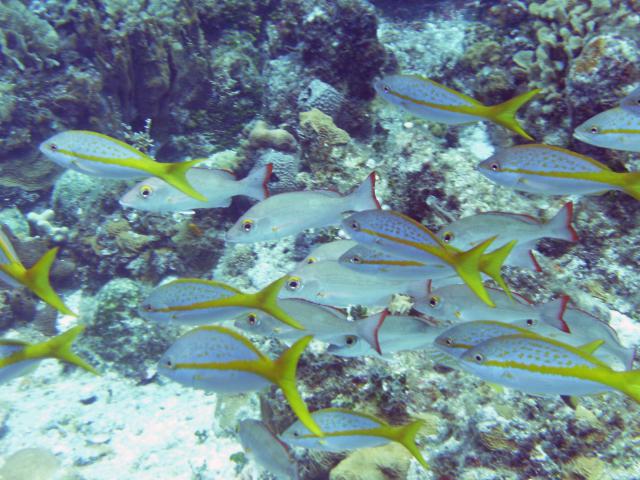
Technical Data: SeaLife DC800 at 13.8mm, 1/80th sec at f/4.7, ISO 64. No Flash. Auto Color Correction, Auto Smart Fix in Photoshop Elements 8.0. Colombia Shallows, Cozumel, Mexico.

Technical Data: SeaLife DC800 at 4.6mm, 1/160th sec at f/5.3, ISO 64. No Flash. Cropped, Auto Color Correction, Auto Smart Fix in Photoshop Elements 8.0. Colombia Shallows, Cozumel, Mexico.
The top photo is of a group of Yellowtail Snapper (Ocyurus chrysurus) while the second shot is of a school of Blue-Striped Grunts (Haemulon sciurus - at least I think so.
Hopefully I don't have to do any post production work on the photos I bring back from this upcoming trip, but if I do, hopefully they are as easy as these!
- Bill
Poll: Black Sea Rod
ktuli — Mon, 12/13/2010 - 19:59
I have started receiving some of my Christmas presents to myself... I've been ordering some camera gear to make my upcoming trip to Indonesia much nicer. Stuff to try some night time-lapse, as well as to take my EOS 7D diving with me. But I'll get into all of that later.
All the research I've been doing to get the gear necessary to take my 7D diving has had me looking at different underwater photos, and a lot of places suggest black and white conversions. So I figured I'd give it a shot myself.
|
|
||
Technical Data: SeaLife DC600 at 5.4mm, unknown shutter speed at f/2.8. ISO 64. No flash.
All of the research for underwater camera equipment really has me chomping at the bit to get back into the water. Hopefully I'll be able to come back with some higher quality dive photos.
If my coral identification skills serve me right, this is Black Sea Coral (Plexaura homomalla) which is a branch yellowish gorgonian coral. It is fairly common around the reefs in Cozumel. The wide angle view of the original shot produced that typical blueish cast to the shot (remember, light travels much slower in water, and red color is the first to disappear).
With that in mind, I figured I'd try a quick bit of color correction on the photo as well as provide the black and white treatment. Place your vote, and leave a comment on why you chose what you did.
- Bill
PS: Working with this photo made me also consider some possibilities with cropping options, so perhaps once we have a "winner" of this poll, I'll run that version through some crop options to see what we can get out of that.
PPS: Also, stay tuned as I'll try to get myself back into a routine of posting by discussing the various equipment I bought myself for Christmas... ;)
Cozumel 2010: Wrap Up
ktuli — Thu, 07/01/2010 - 19:49
So before everyone gets tired of scuba photos (especially ones with bad blue color casts), I'll wrap this set up and we'll get back to some land based photography soon.
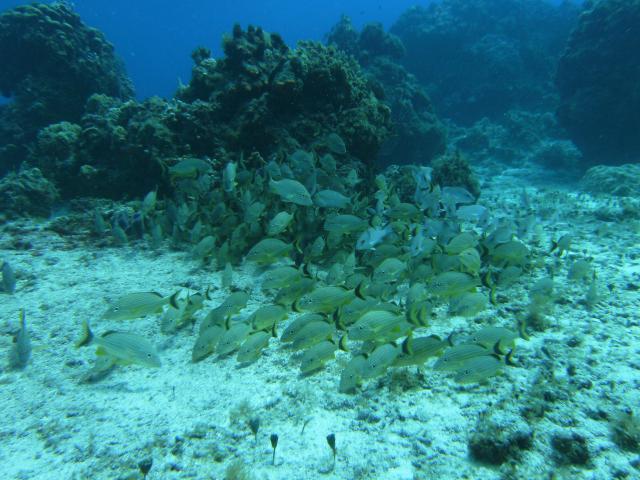
This school of fish sat right at the front of this coralhead where two channels split off to each side. At first, they blended right into the slope of the coralhead. Then as I knelt there getting set to take a photo, the school pulled in close to each other, then spread out, shifting and pulsing to maintain their prized position. It is fun for me to watch fish behavior - whether it be individuals or whole schools of fish. For underwater photography, I feel schools of fish like this fall into a kind of "landscape" photography while still being wildlife photography.
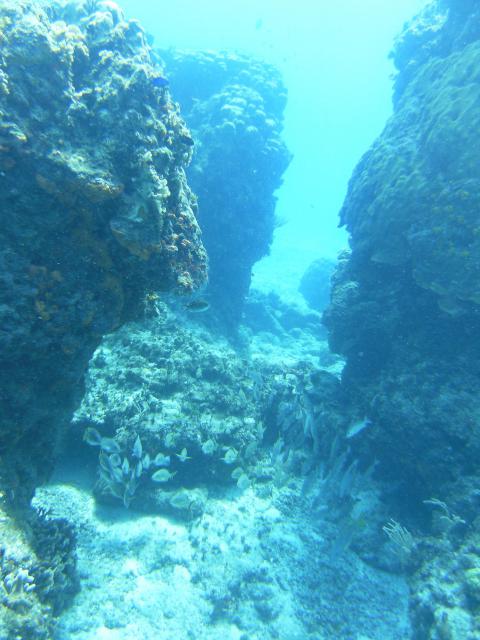
Though this photo is definitely over-exposed, I liked this one as a nice shot of the way the coral and structure is is Cozumel. Our general dive provide per day would be three dives (two morning and one afternoon) - with each dive becoming progressively shallower. The first dives would usually be in the 70-90 feet range, and sometimes would include swim-thrus. In some cases, these swim-thrus would include complete tunnels and other times it would be open like this. This particular set of formations were actually at a more shallow dive site, but some of the sites had formations right out by where the depth drops off into the deep blue. This is usually referred to as 'the wall'. There's something fun yet a bit nerve wracking about being exposed out on the edge of the wall with nothing but deep dark blue next to you - but I do always scan the blue to see if something cool might make a brief appearance there.
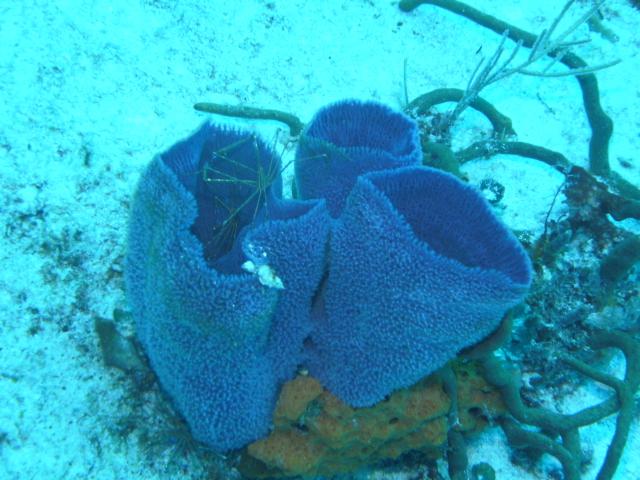
This shot was actually a surprise for me. I can recall Anya pointing out these two arrow crabs, but I didn't remember taking the photo, and it turned out to be a fairly nice one. These arrow crabs are cool little creatures. We saw more of them last year, but it was still nice to see a handful of them this year. Eventually I'm sure these guys will become macro subjects for me, but that'll have to be another dive trip.
Thanks for stopping by and checking out all the photos and dive stories from our trip to Cozumel this summer. I apologize for the blue color cast to most of the photos. Hopefully next time I'll do better at figuring out what I am doing wrong and come home with better photos.
- Bill
Cozumel 2010: Assortment
ktuli — Wed, 06/30/2010 - 19:37
Just an assortment of photos today... enjoy.
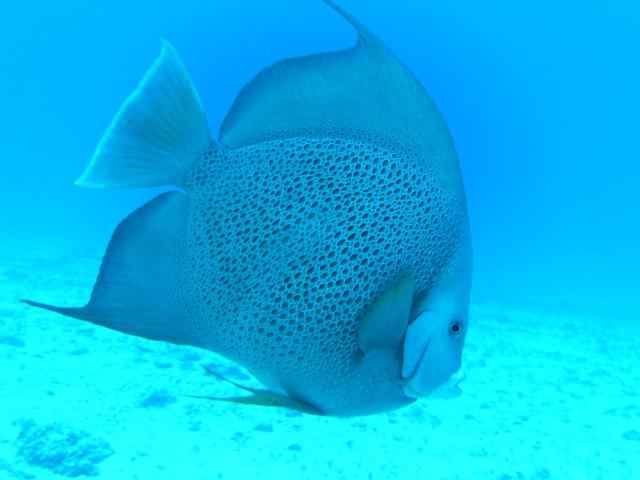

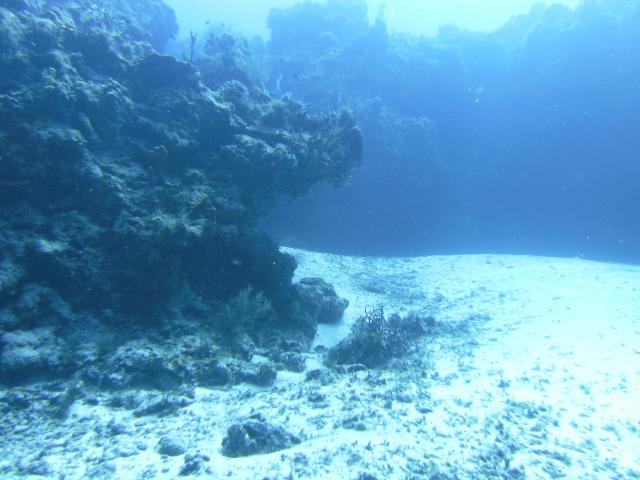
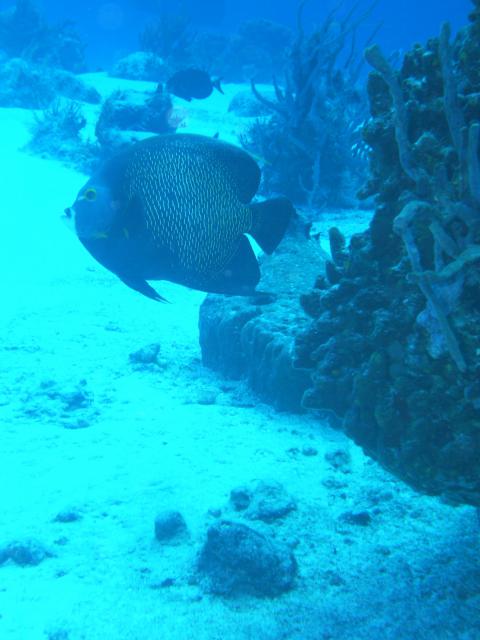
Feel free to leave a critique in the comments if you like.
- Bill
Cozumel 2010: Coralheads and Divers
ktuli — Fri, 06/25/2010 - 22:01
So I really like photos of coralheads with divers. There is something about the combination that I like - it might be the sense of scale, or just the visual presentation of the activity I've grown to enjoy - but I found myself looking for such opportunities on this year's dive trip to Cozumel.
If you haven't seen the inspirational shot from last year's trip, take a few minutes and go read the discussion of the photoshop adjustments I made to another coralhead and divers photo.
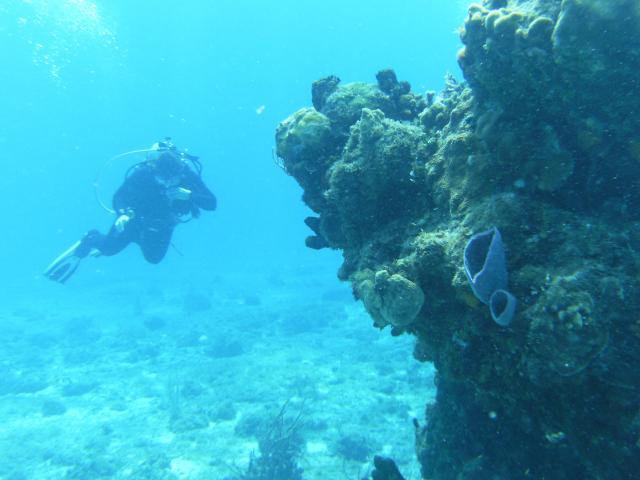
This one I snapped of Anya with this small coralhead in the foreground. I am not overly thrilled with this photo as I didn't like the posture I caught Anya in - she was adjusting some equipment or maybe just finishing up equalizing her ears. You need to get the air pressure inside your ears to match that outside, so as you dive you have to constantly be aware of it and equalize as needed. It becomes something you almost do without thinking or it can really hurt! Think about when you last flew in an airplane or drove to the top of a mountain - did your ears "pop"? That's basically the same thing but with water pressure pressing on your ears and you need to get it to balance on the inside. Anyway - it doesn't make for really great photograph material.
It isn't often that Anya is that far from me during a dive. We tend to be pretty conservative divers and stick pretty close. Plus, just like on our terrestrial photo excursions, Anya tends to be a fantastic spotter, so usually she's just ahead of me pointing out the cool thing to photograph next.
The other coralhead and diver photo is of one of our dive instructors - Brigette. She is the epitome of calm when diving. I am amazed to see a bubble trail coming from her in this photo actually, because many of us believe she doesn't breath at all while underwater (there are rumors of gills hiding somewhere). Brigette almost always gets back on the boat with the most air left in her tank of any of the divers in our group. I think both Anya and I strive to someday be as calm in the water as Brigette.
Anyway, I like this photo a bit more from a technical standpoint. The overall layout - especially with the vertical orientation - helps to provide a different perspective to things. The coralhead in the foreground helps to add to the perception of the size (though it does exaggerate the coralhead to be larger than it was). The placement of the coralhead falls nicely on one of the thirds, providing a nice balance to the photo and produces much less empty blue space than the previous photo.
What I don't like about the photo (aside from the blue color cast) is the lack of depth perception - the photo appears to be extremely flat. That might be fixable in photoshop. Unfortunately, the timing was slightly off here too as I left Brig's fins hidden behind the coralhead, which I feel leaves out a vital element of a photo of a diver. And of course, the color cast causes the coralhead to lose all of its beautiful color and diversity.
Ok - so I guess I could resist critiquing the photos after all... I just took a less formal approach to it. Be sure to stop back again soon as I have wreck photos, fish photos, and maybe some other little surprises in the hopper for additional posts from this trip.
- Bill
Poll: Foray into Photoshop
ktuli — Sat, 02/27/2010 - 19:28
Normally I hate modified photos. In particular, I hate modified photos when you can tell the photo has been modified.
One of the presents Anya got me for Christmas was a copy of Photoshop Elements. At first, I wasn't sure whether I would use it much.
With my recent venture into entering various competitions, I've found the need to use it a bit more.
We have some photos from our dive trip to Cozumel, and I love them as photos, but their color isn't necessarily spot on.
So I modified the following photo to see if I could make the colors closer to what I remembered them to be like. Take a look at the original and the modified version below, and vote for which one you like better.

Unmodified
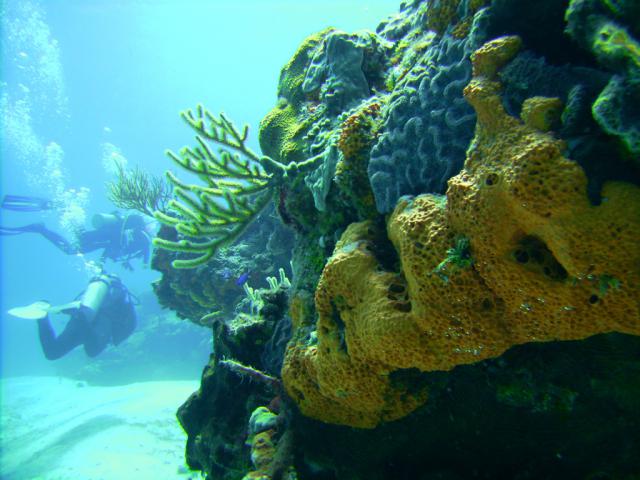
Modified
Unfortunately, I forget what exact changes I made (something I will try to be a bit better about recording in the future), but I know that I darkened the photo and adjust the contrast slightly. I also modified the colors slightly to remove a bit of the blue color cast that is typical of underwater photography.
The colors in underwater photography without a ton of flash is usually not accurate since the spectrum of light drops off the deeper you go. Did you know that? That is one of those things you don't really think about, but you learn when you get scuba certified.
Anyway - vote for which version of the photo you like better, and leave a comment to back up your vote.
- Bill

